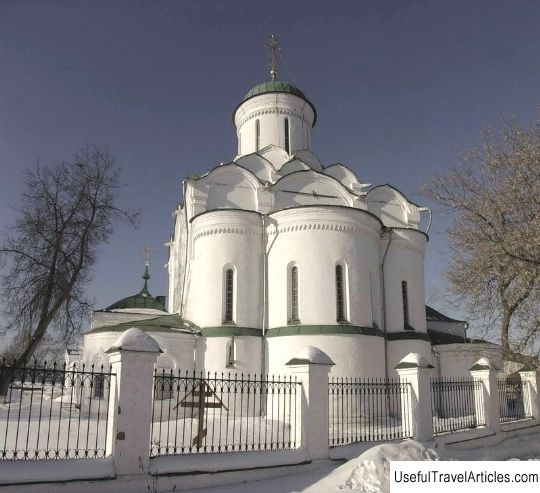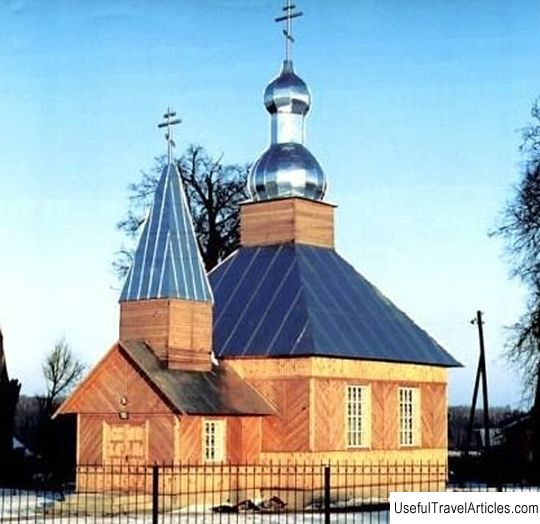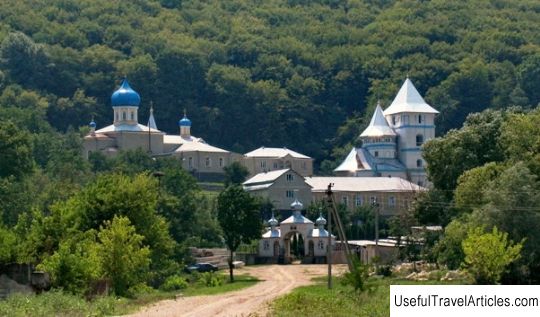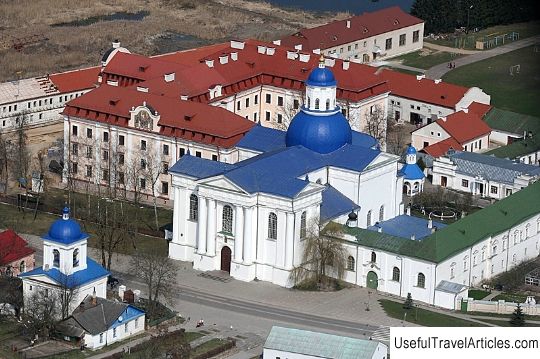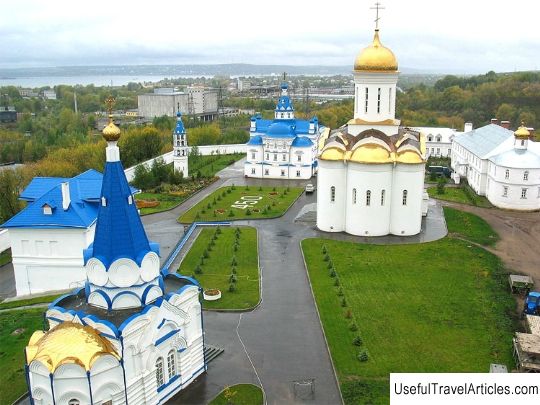Dormition Knyaginin monastery description and photos - Russia - Golden Ring: Vladimir
Rating: 8,9/10 (1493 votes) 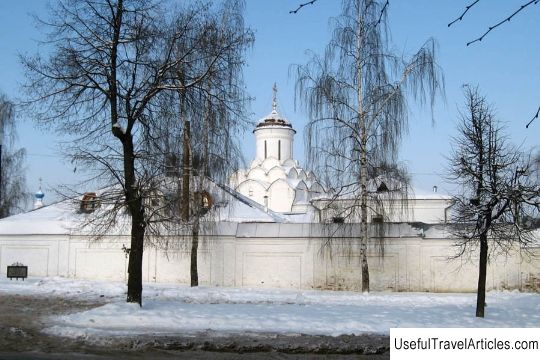
Dormition Knyaginin monastery description and photos - Russia - Golden Ring: Vladimir. Detailed information about the attraction. Description, photos and a map showing the nearest significant objects. Photo and descriptionThe Dormition Knyaginin Monastery was founded in 1200 on the territory of the so-called New Town, near the lines of ancient ramparts facing the Lybid River by Vladimir Prince Vsevolod. The emergence of the monastery is associated with the name of Vsevolod's wife - Maria, who was the daughter of the Ossetian prince Shvarnovna. Maria Shvarnovna was a faithful assistant to her husband and a selfless mother who raised twelve children. In 1198, after the birth of her last son, the Grand Duchess fell ill and for 7 years resignedly endured suffering. During her illness, she made a vow to found a monastery, and in 1200, Vsevolod, at her insistence, founded the Dormition Princess Monastery. In 1206, the Grand Duchess became a nun under the name Martha. After she was tonsured, Mary died and was buried in the monastery. In the name of Princess Mary, the monastery was named Knyaginin. Then the main church of the monastery became a family tomb. The princess's sister Anna is buried here, Elena is the daughter of Maria, two wives of Alexander Nevsky, as well as his daughter and other noble women. In a later period, the sister of Admiral M.P. Lazarev, the discoverer of Antarctica, - V.P. Lazarev. The organizer of the monastery was an image of Russian holiness. Her descendants were also glorified as saints. Among them are her sons Yaroslav, Georgy, Konstantin, Svyatoslav Vsevolodichi, grandchildren Theodore and Alexander Nevsky, Vasilko, sons of Georgy, Daniel of Moscow and others. Princess Maria herself is also glorified in the Cathedral of the saints who shone in the land of Vladimir. The monastery has suffered more than once from the Tatar-Mongol and Horde raids. In 1411 g. during the invasion of Vladimir by the Tatars under the control of Tsarevich Talych, the monastery was ruined. The revival of the monastery began only in the 16th century. Among those who participated in the restoration of the monastery are Grand Duke Vasily Ioannovich, Ivan the Terrible, Mikhail Fedorovich and Alexei Mikhailovich. The wife of Ivan the Terrible's son, Pelagia Mikhailovna, was in the monastery for some time. Since 1606, the daughter of Boris Godunov, Ksenia, lived here, who later took monasticism. In the 17th century. in the monastery there were special tsaritsin's mansions, their contents were monitored by the Vladimir voivode. From the beginning of the 18th century. during the times of Peter the Great and the reign of Catherine II, the Knyaginin monastery experienced some decline. The revival of the monastery began only in the 19th and early 20th centuries. In 1876, a hospital for the poor was established at the monastery. And in 1889 a handicraft parish school for girls was opened here. In 1923, the monastery was forcibly closed by the repressive Soviet authorities. The liquidation of the monastery took place within 8 months and was accompanied by the plunder of the monastery property. The nuns were expelled from their cells. The premises were occupied by responsible workers of the Communist Party and the leadership of the Soviet government. Due to the closure of the monastery and the creation of a settlement for the Soviet bureaucratic elite, the monastery cemetery was also liquidated. In 1923 the monastery as a territorial unit was renamed into the village of. Vorovskogo. In 1992 the Knyaginin monastery began to revive to life as a female monastic monastery of the Vladimir diocese. The abbess of the monastery was nun Antonia (Shakhovtseva). There are two stone churches on the territory of the Knyagininsky Monastery: Kazan and Assumption Cathedral. The Assumption Cathedral is a magnificent example of early Moscow architecture. In Vladimir, this is the only building in a similar style. The outer walls of the temple end with zakomaras. Above them in two rows are keeled kokoshniks, which are the basis for a drum with a helmet-shaped head. Flat blades dividing the facade into spinners and narrow slit windows attract attention to the smooth shapes of the building's silhouette. The walls of the Assumption Cathedral are painted from the inside with frescoes (1648), which were made by Moscow isographers by order of Patriarch Joseph. The masters were supervised by Mark Matveev. The temple in honor of the Kazan Icon of the Mother of God has two side-chapels: one in honor of John Chrysostom, the other in honor of the martyr Abraham. The Kazan Church is distinguished by the ancient royal gates with virtuoso carvings of the 16th century. One of the few pre-Mongol icons that have survived to our time is located in the Assumption Cathedral. The icon of the Bogolyubskaya Mother of God, which is miraculous, was written by order of Prince Andrey Bogolyubsky in honor of the miraculous appearance of the Mother of God to him. In addition to the icon of the Mother of God, the shrine of the monastery is the particles of the relics of torture Abraham the Bulgarian. Saint Abraham was from the Volga Bulgars, he professed Islam, and then converted to Orthodoxy and began active missionary activity. Abraham's brothers in the Muslim faith persuaded him to renounce Christ, but he was adamant in his new faith and chose martyrdom. In 1230, Prince of Vladimir Georgy Vsevolodovich transferred the relics of Abraham to the Assumption Cathedral,           We also recommend reading Monument Sultan Allaadin Keykubat (Monument Sultan Allaadin Keykubat) description and photos - Turkey: Alanya Topic: Dormition Knyaginin monastery description and photos - Russia - Golden Ring: Vladimir. |
